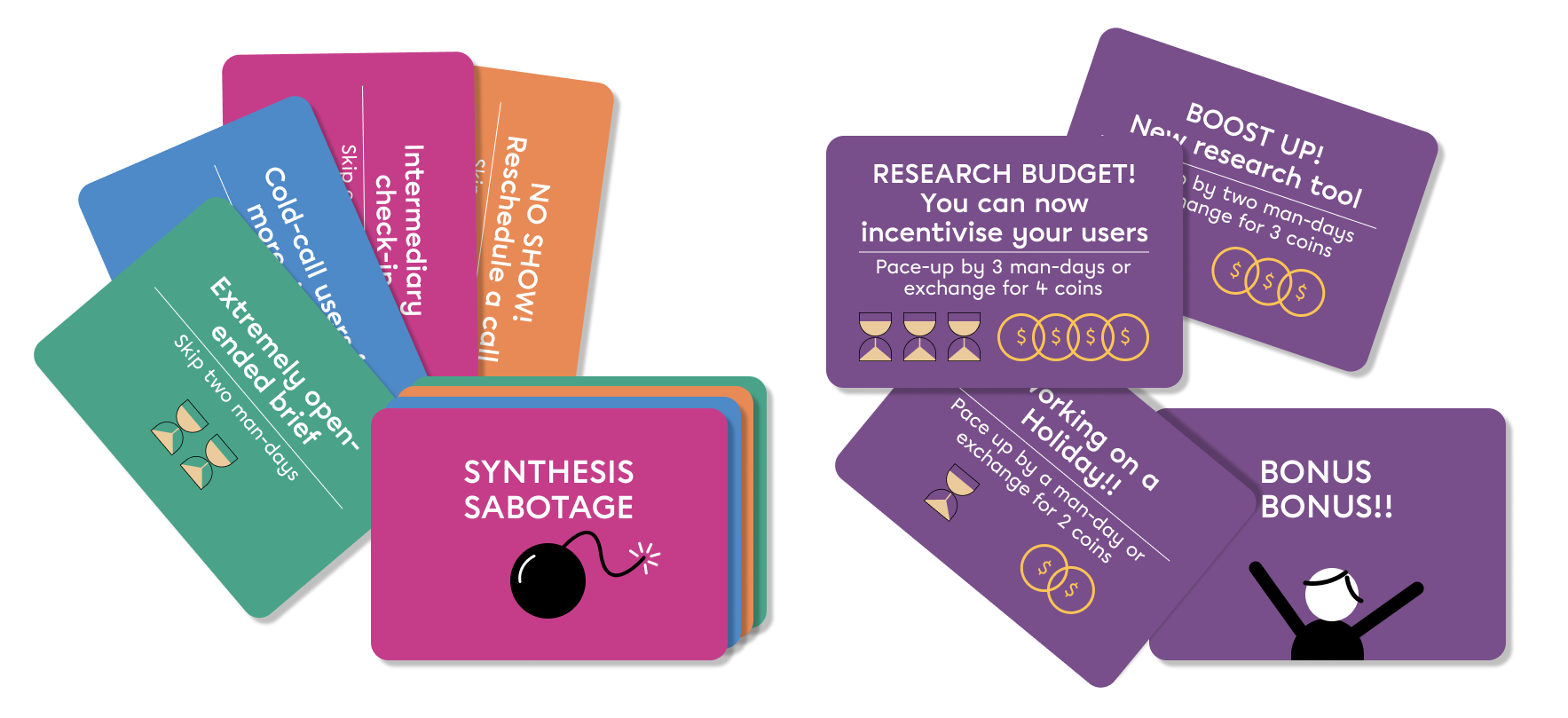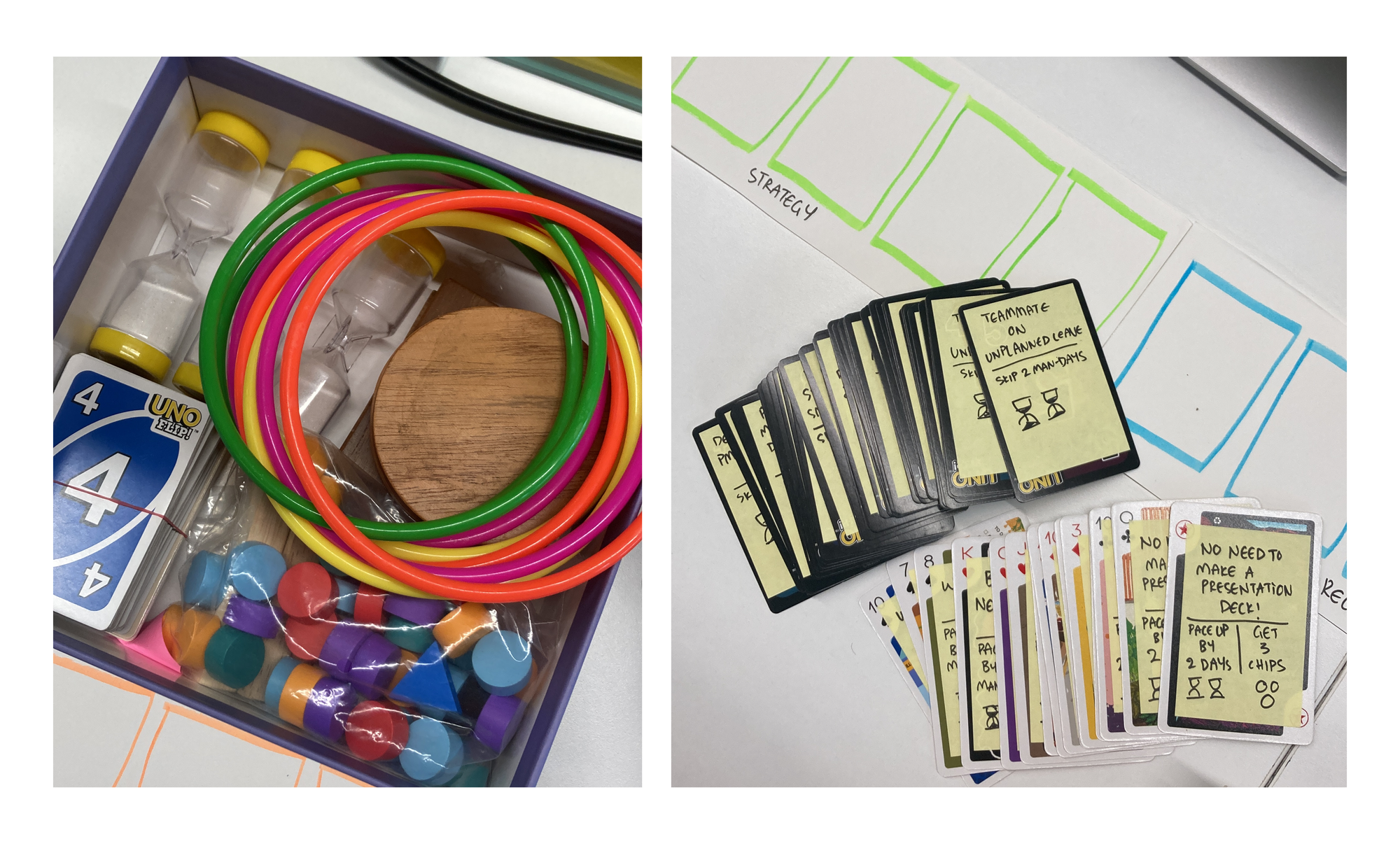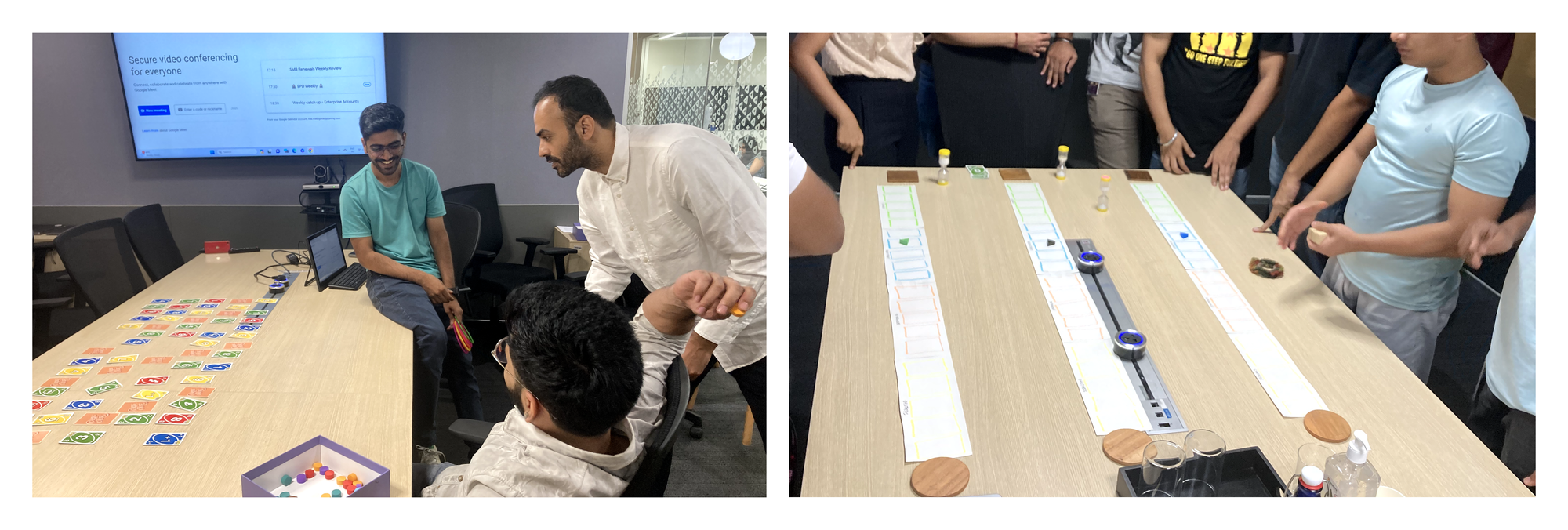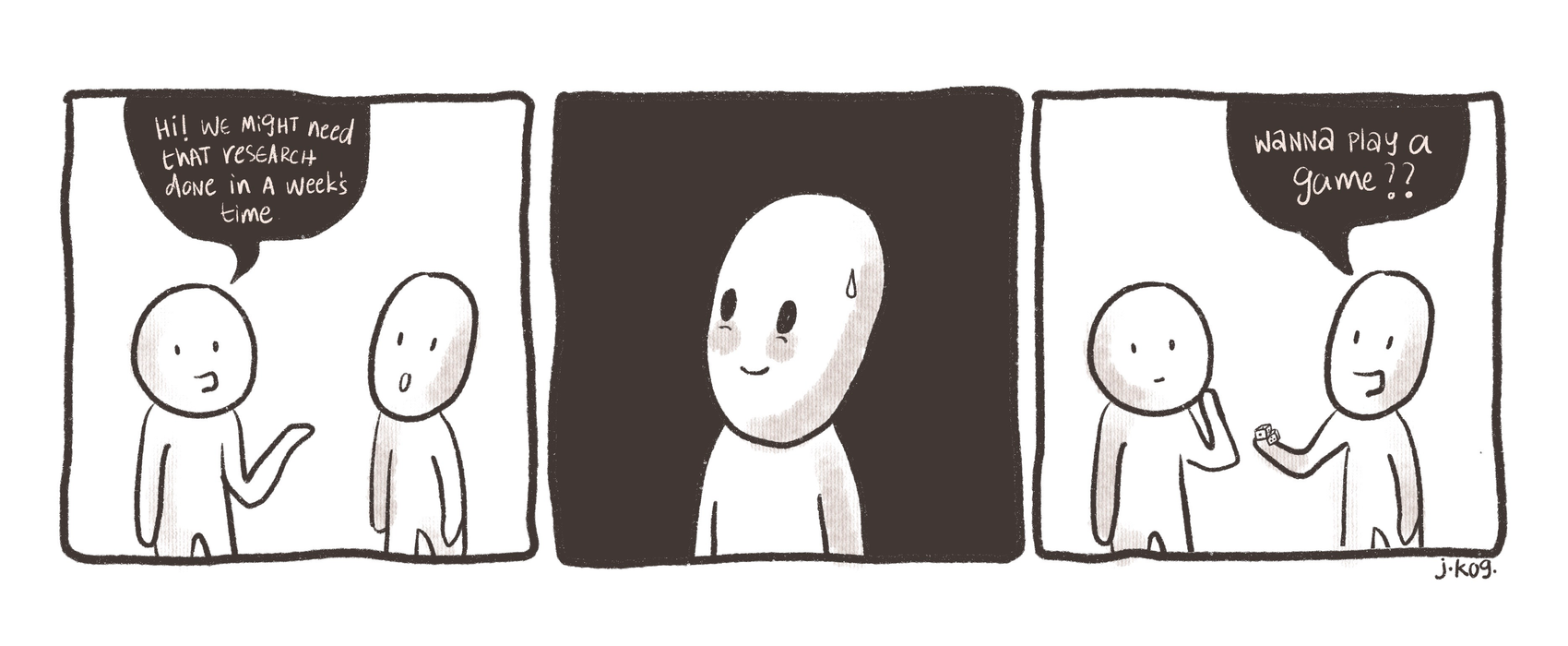Attempting interactive gameplay in evangelising research
“Over half of my work involves clarifying and elucidating the nature of my work to people who seem to almost get it, but really don’t.” — every researcher I ever met
Planning fallacy is a phenomenon in which one underestimates the amount of time, costs and risk associated to complete a task. This bias is more prevalent in relatively newer functions like design research, more so in a start-up scenario where research teams are younger, smaller, short on resources, and are often managed by non-researchers.
My teammate and I, for example, take care of everything from start to finish, including drawing-up the research strategy, planning timelines, recruiting users, qualitative-quantitative studies, transcription, synthesis, documentation……the list goes on. We have no ops team or third party agency to rely on. Sometimes, even being super-efficient doesn’t solve the problem of delayed timelines.
Planning bias aside, engineering, product and design teams are slowly unlearning their old ways to accommodate design research into their roadmaps. Ask a researcher how they navigate conversations around deadlines with colleagues from these teams — it’s highly likely they might let out a deep sigh. The question is — How do we help non-researchers not just understand, but empathise with our day-to-day challenges?
The Research Deadline game (need a better name) is an attempt to bring the engineering, product and design teams together to understand, use and contribute to research better. Personally I’d prefer designing a game over a boring presentation deck any day.

For the game I narrowed down on two specific questions to form the larger narrative — What are the primary bottlenecks in achieving research deadlines? How do we invite a collaborative effort to address this issue?
The idea was simple — Simulate the real-life constraints in research through a game. I decided to focus on usability studies in particular due to shared understanding across functions around this kind of research. Additionally, the nature of usability studies demand a lot of dependency on other functions.
Though not perfectly linear, the game design can be broken down into six broad phases as follows-
Phase 1: Elaborating on the context

Sabotage and Bonus cards
This process helped me in forming the core narrative for the game and in incorporating the apt game dynamics. I started by breaking down the phases in a usability study. I also listed down all the constraints that researchers might encounter in each of these phases, along with some of the dependencies that hinder their work. This helped me design the sabotage and the bonus cards.
Phase 2: Understanding the stakeholders and their roles

Game characters
In this phase I tried to elaborate on all the stakeholders involved and the roles they play in making research happen. This can be researchers themselves, designers, product managers, other stakeholders, users, etc. This helped me create the game characters with specific roles and responsibilities within the game — flipper, breaker, grim reaper, dealer, deck keeper and the game master.
Phase 3: Design the strategy
Time is the limited resource that we deal with as part of every research exercise. The objective of the game is simple — the team that meets their deadline first wins. You can strategise to be the most efficient team on planet, but most constraints might not be in your control. To recreate this in the game, I decided to let luck overpower strategic game play.
Phase 4: Game elements
I decided to make time the most important element of the game and wanted to represent it as literally as possible using hourglasses. Each minute on the hourglass equals one man-day in real life. Then we have constraints and unexpected bonuses we encounter. For players to access these constraints and bonuses we need currency in some form that they can deal with, so we have our game currency.
Phase 5: Putting the game together

Upcycled game elements from several board and card games
In this phase all the ideas and elements designed so far came together to complete the game. I upcycled different elements from my board and card games stash — For example, UNO cards became the sabotage cards, rummy cards were morphed into bonus cards, wooden chips from Cryptid turned into currency, Jenga blocks became grim reaper’s penalty blocks, etc.
Phase 6: Test play with friends and colleagues
I organised quick test plays with different groups to get feedback on the tightness of the strategy before the D-Day. This helped me in refining the strategy and in plugging loose ends if any.
Game play:

Saurabh Arora, CTO and Co-founder at Plum and others engaging in the gameplay
The game itself turned out to be more fun and engaging than I envisioned it to be. Players were completely plugged into the game as they attempted several strategies to make it to the deadline faster. They tried their best to block other teams and progress faster. To a typical outsider everything happening in the conference room sure seemed nothing short of a riot XD
Takeaway:
Under ideal circumstances the game is design to be completed in 20 minutes aka 20 man-days, which is also the deadline for the research study. But, the fastest team managed to finish the game in 32 minutes, i.e., 32 man-days despite their most-efficient gameplay. The game successfully communicated the intended objective and helped the players in getting familiarised with several research constraints. Cherry on the cake being everyone having absolute blast for an hour.
Observation and reflection:
It was fascinating to see that users spontaneously came up with new strategies to speed-up their game — teams with more sabotage cards exchanged them with other teams for coins and vis-a-vis. One important observation that stood out was, though users familiarised themselves with the research constraints, the timely nature of the gameplay did not give enough space for reflection. The objective for the next iteration is thus to make space for micro-reflections by not compromising on the fun aspect.
What’s next?
I believe that this game strategy can be morphed into several other work contexts and can act as a powerful tool in enabling complex conversations. It can also form the perfect backbone to team-bonding exercises and can help in addressing more elephants in the room.
Acknowledgement
Thank you Saurabh Arora for creating the perfect opportunity and pulling the team together to indulge in the gameplay. Thank you Baishnabi Monger, Ganapathi Ramanathan and Aishwarya Venkatesan for testing the strategy and helping me in refining it.


Comments